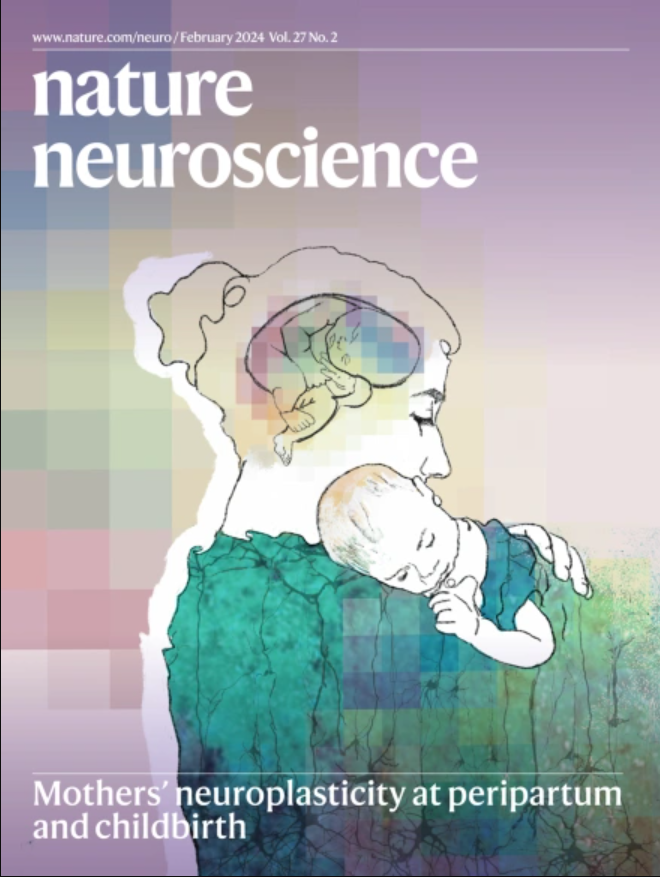在多发性硬化症小鼠模型中,星形胶质细胞中的CLEC16A促进有丝分裂并限制病理
IF 21.2
1区 医学
Q1 NEUROSCIENCES
引用次数: 0
摘要
星形胶质细胞通过细胞内在活动及其招募和激活其他细胞类型的能力促进多发性硬化症(MS)的神经炎症和神经退行性变。在一项基于crispr的全基因组正向遗传筛选中,研究了星形胶质细胞促炎反应的调节因子,我们发现含有c型凝集素结构域的16A基因(CLEC16A)与MS易感性相关,是核因子-κB (NF-κB)信号传导的抑制因子。小鼠原代和人胚胎干细胞来源的星形胶质细胞的基因和小分子微扰研究结合多组学分析证实,CLEC16A促进线粒体自噬,限制线粒体功能障碍和线粒体产物的积累,这些产物激活NF-κB、NLRP3炎性小体和气胶蛋白D。星形胶质细胞特异性CLEC16A失活增加体内NF-κB、NLRP3和气胶蛋白D的激活,加重实验性自身免疫性脑脊膜炎。此外,我们在MS个体的星形细胞样本中检测到有丝分裂能力和气皮蛋白D激活的破坏,这些发现证实了CLEC16A是星形细胞病理反应的抑制因子和MS的候选治疗靶点。本文章由计算机程序翻译,如有差异,请以英文原文为准。


CLEC16A in astrocytes promotes mitophagy and limits pathology in a multiple sclerosis mouse model
Astrocytes promote neuroinflammation and neurodegeneration in multiple sclerosis (MS) through cell-intrinsic activities and their ability to recruit and activate other cell types. In a genome-wide CRISPR-based forward genetic screen investigating regulators of astrocyte proinflammatory responses, we identified the C-type lectin domain-containing 16A gene (CLEC16A), linked to MS susceptibility, as a suppressor of nuclear factor-κB (NF-κB) signaling. Gene and small-molecule perturbation studies in mouse primary and human embryonic stem cell-derived astrocytes in combination with multiomic analyses established that CLEC16A promotes mitophagy, limiting mitochondrial dysfunction and the accumulation of mitochondrial products that activate NF-κB, the NLRP3 inflammasome and gasdermin D. Astrocyte-specific Clec16a inactivation increased NF-κB, NLRP3 and gasdermin D activation in vivo, worsening experimental autoimmune encephalomyelitis, a mouse model of MS. Moreover, we detected disrupted mitophagic capacity and gasdermin D activation in astrocytes in samples from individuals with MS. These findings identify CLEC16A as a suppressor of astrocyte pathological responses and a candidate therapeutic target in MS. The mechanisms of pathological astrocyte responses during multiple sclerosis remain unclear. Kadowaki et al. found in MS mouse models that CLEC16A suppresses astrocyte pathogenic activities related to mitochondria by boosting mitophagy.
求助全文
通过发布文献求助,成功后即可免费获取论文全文。
去求助
来源期刊

Nature neuroscience
医学-神经科学
CiteScore
38.60
自引率
1.20%
发文量
212
审稿时长
1 months
期刊介绍:
Nature Neuroscience, a multidisciplinary journal, publishes papers of the utmost quality and significance across all realms of neuroscience. The editors welcome contributions spanning molecular, cellular, systems, and cognitive neuroscience, along with psychophysics, computational modeling, and nervous system disorders. While no area is off-limits, studies offering fundamental insights into nervous system function receive priority.
The journal offers high visibility to both readers and authors, fostering interdisciplinary communication and accessibility to a broad audience. It maintains high standards of copy editing and production, rigorous peer review, rapid publication, and operates independently from academic societies and other vested interests.
In addition to primary research, Nature Neuroscience features news and views, reviews, editorials, commentaries, perspectives, book reviews, and correspondence, aiming to serve as the voice of the global neuroscience community.
 求助内容:
求助内容: 应助结果提醒方式:
应助结果提醒方式:


